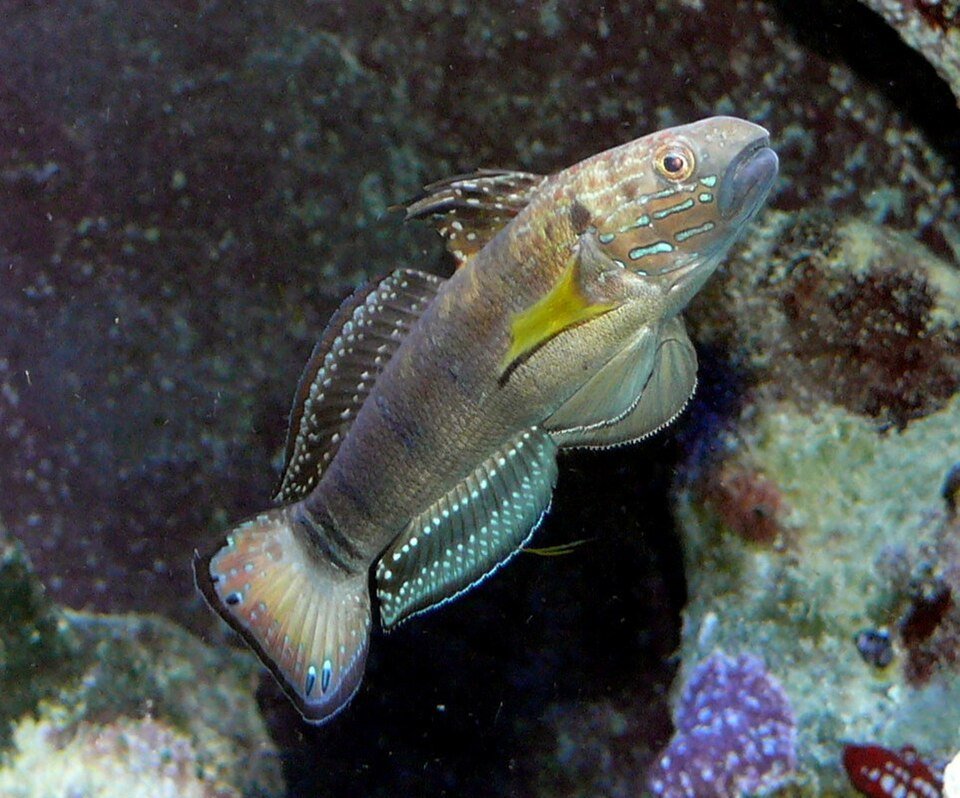UK.- We’re all familiar with the heroism of a tiny fish called Nemo. Thanks to a scientist at the University of Portsmouth, a new star of the sea may be about to be born on whose tiny shoulders arguably rests the survival of a misunderstood corner of the world – mangrove swamps.
The two-cm long goby fish is the unexpected star of the three-part documentary series “Paradise Islands”, a Terra Mater Factual Studios production, co-produced with German broadcaster NDR and National Geographic.
Dr. Ian Hendy, a tropical marine ecologist who was a consultant on and helped make the second episode, is pinning his hopes on the goby helping save the world’s mangrove swamps, currently at high risk from development.
He says that once people see the goby’s extraordinary survival against the odds, wriggling into finger-sized holes in fallen woody debris to survive when the tide goes out, everyone will want to help save its salty, muddy home.
He said: “In the mangroves there are land creatures and sea creatures surviving almost cheek by cheek – fishes, octopods and crustaceans, alongside spiders and centipedes. It’s simply incredible.
“At high tide, you can swim in among the trees in five feet of crystal clear water. It’s like swimming in a forest.
“Mangroves may look like a swamp to the untrained eye, but they’re one of the world’s wildlife jewels.”
Stay Always Informed
Join our communities to instantly receive the most important news, reports, and analysis from the aquaculture industry.
Mangroves – where trees grow in salt water – are found in more than 150 countries, mainly in the Tropics, but they are disappearing at a rapid rate, cleared both for the wood and as prime seafront development sites.
“I hope by looking at swamps through the eye of the goby, people will come to see they are prime real estate for animals, too,” Dr. Hendy said.
Life in the mangroves is very tough, though.
To survive, animals, insects and plants have adapted to hostile conditions, including huge changes in the saltiness of the water as the tides rise and fall and temperatures ranging from 24˚C to more than 40˚C twice a day.
How various land and sea-based creatures have adapted to such extremes is told through the story of the goby, which at low tide finds sanctuary in small holes in fallen wood, where temperatures can be as much as 14˚C cooler, making it much less stressful environment.
Each creature in the mangroves has its own ‘survival against the odds’ story, including spiders which weave waterproof nests out of silk creating an air bubble, like mini zorbs, in which they wait for the high tide to subside.
Octopods, the size of five pence pieces also live within the tunnels in fallen wood, using them as nurseries by lining them with their eggs. The cooler temperatures inside the wood provide a better chance for survival for the vulnerable juveniles.
Another new star in the making which features in the series is the fiddler crab. University of Portsmouth marine biologist Laura Michie, who also helped make the programme, tells the story of an opportunistic creature which has won at life’s game of chance.
She said: “Ten species of fiddler crab have been found living on the same mangrove beach, one of the highest crab species diversities ever recorded anywhere in the world. They’ve made their home on the edge of a mangrove and a small village, and the shelter of people’s homes, combined with their plentiful waste providing food, have allowed crabs to live in places that would otherwise be uninhabitable. This is rare, as people often have a detrimental influence on species diversity.”
Fiddler crabs are important to mangroves’ sustainability because by burrowing into the ground they help to get oxygen to the roots of the trees and they eat the decaying plant material.
The programme was filmed over five weeks on a small, coral-rich island off East Sulawesi, an Indonesian island east of Borneo.
Indonesia has the planet’s largest area of mangrove swamps, covering more than 20,000 square kilometres.
Dr. Hendy said: “At just two centimetres long, the goby doesn’t seem the obvious first choice for saving our planet, but everyone who sees it is going to be entranced and that might turn the tide for mangroves.”
Dr. Hendy is not new to imploring people to see beauty in a swamp.
In addition to specialising in fish behaviour and ecology, he is also special adviser to the Mexican government on conservation of marine habitats. He was appointed following the death of a coral reef and reducing mangrove forests, the area’s main tourism industry.
“The coral was dying because the mangroves had been taken out. The mangroves, the sea grasses, the coral, they are all inter-connected.
“Everyone can understand Mexico wants to build hotels to benefit from tourism; it’s been done all across the world. The thing is we now know what removing mangroves means – not just the loss of a single habitat, but the potential loss of many habitats.
“I can publish in scientific journals non-stop but we need to bring the magic and mystery of a misunderstood mangrove swamp to a wide audience if we are to save them.”
Source: University of Portsmouth
Editor at the digital magazine AquaHoy. He holds a degree in Aquaculture Biology from the National University of Santa (UNS) and a Master’s degree in Science and Innovation Management from the Polytechnic University of Valencia, with postgraduate diplomas in Business Innovation and Innovation Management. He possesses extensive experience in the aquaculture and fisheries sector, having led the Fisheries Innovation Unit of the National Program for Innovation in Fisheries and Aquaculture (PNIPA). He has served as a senior consultant in technology watch, an innovation project formulator and advisor, and a lecturer at UNS. He is a member of the Peruvian College of Biologists and was recognized by the World Aquaculture Society (WAS) in 2016 for his contribution to aquaculture.




